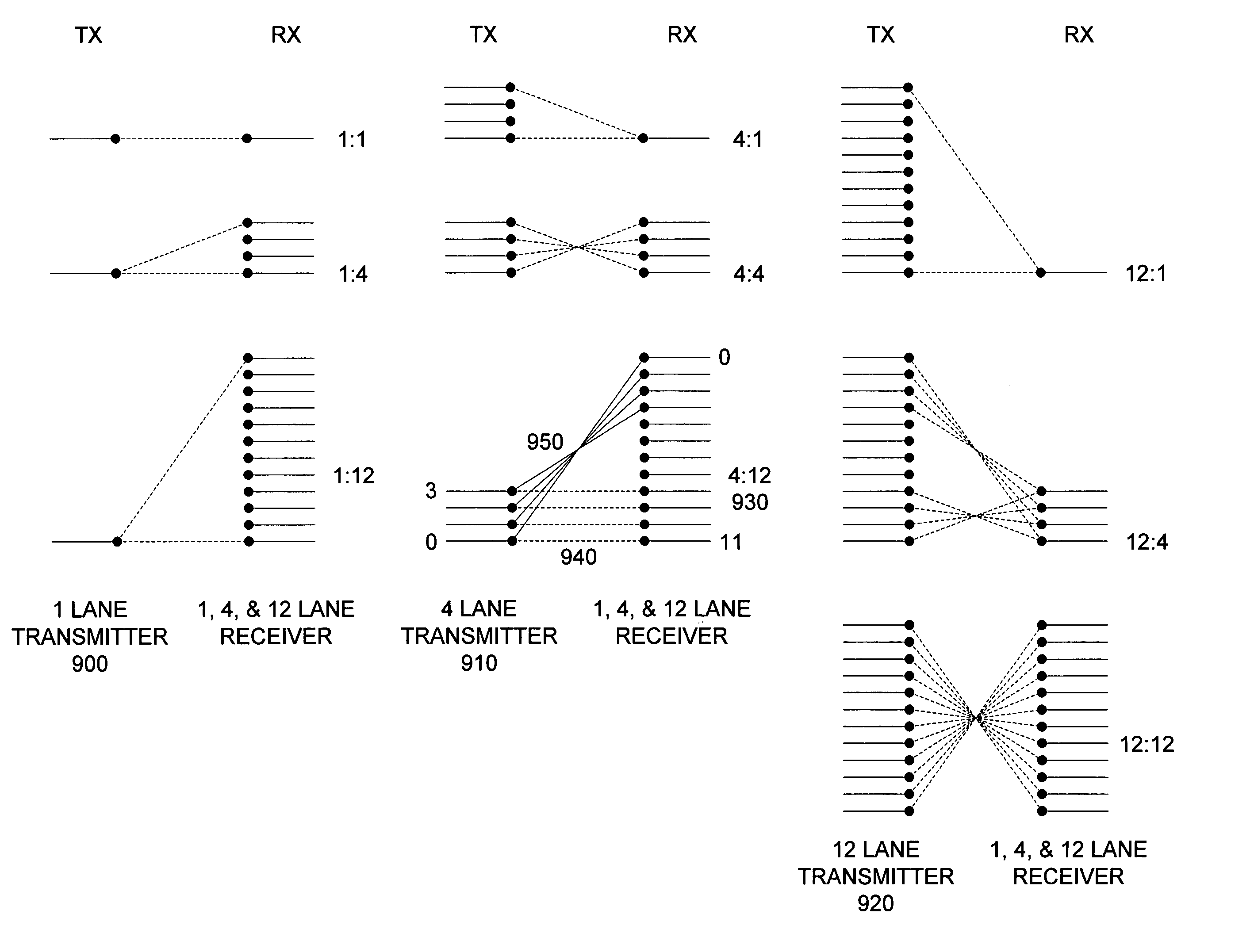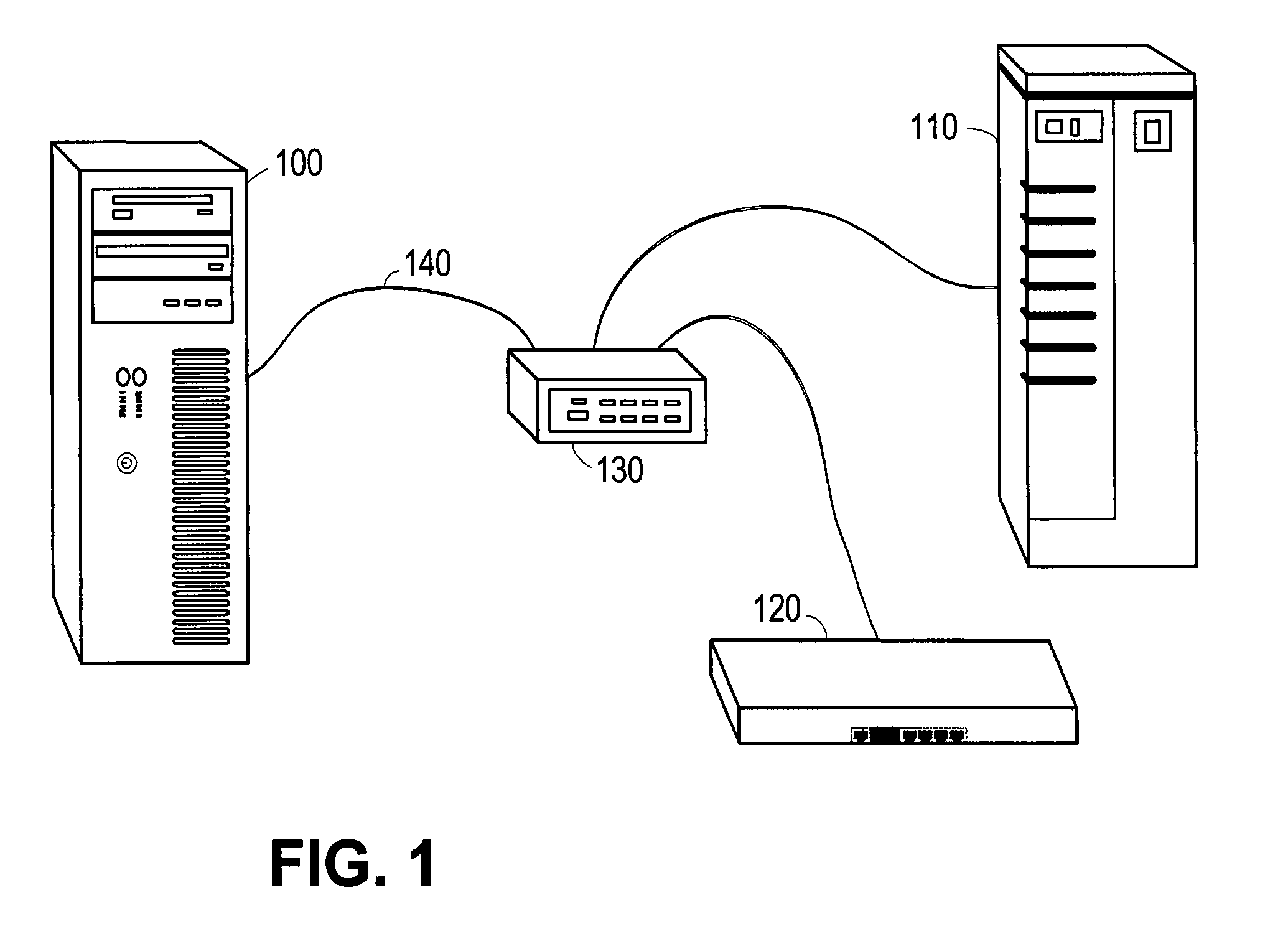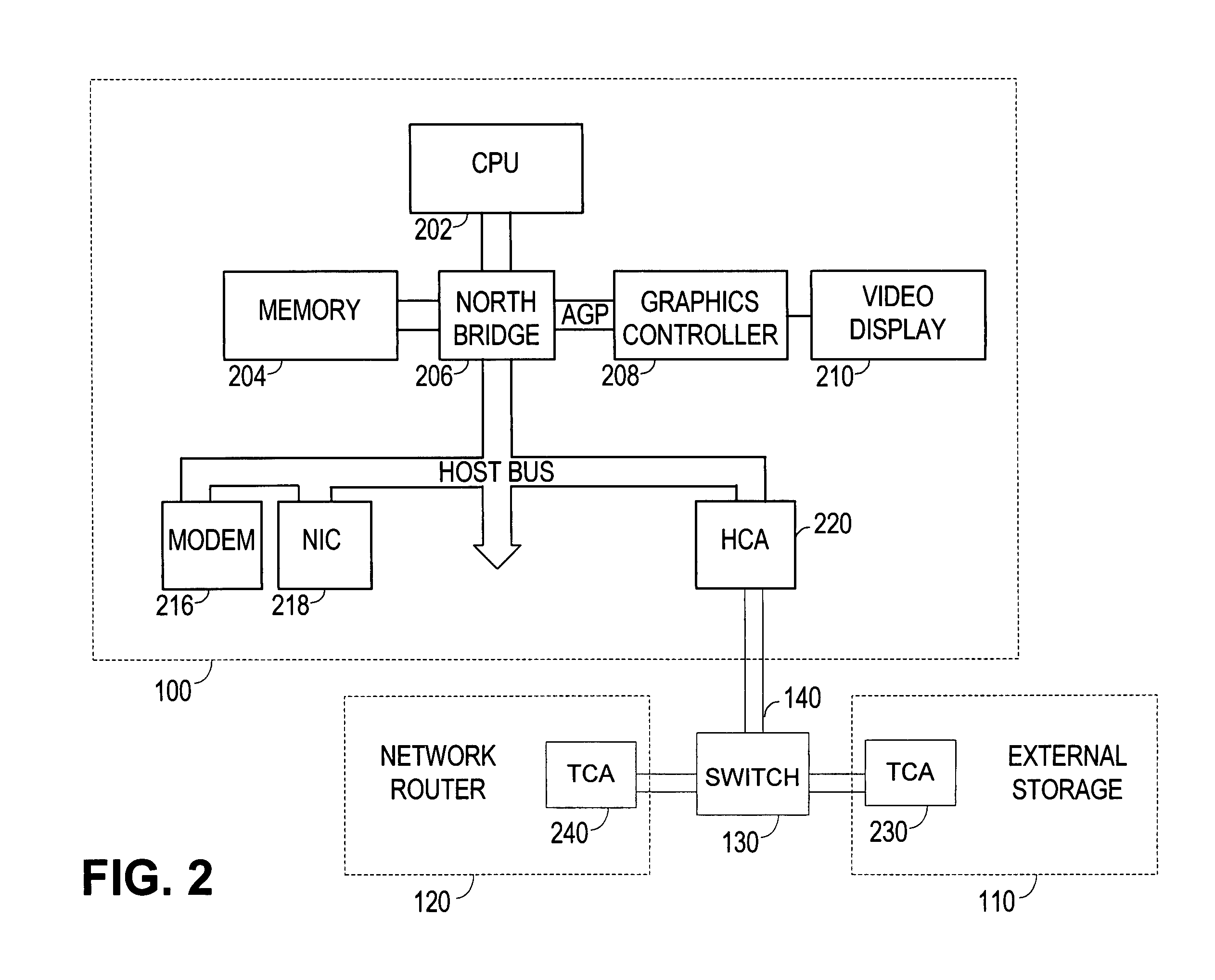High-speed interconnection link having automated lane reordering
a high-speed interconnection and automatic technology, applied in the direction of electrical equipment, channel dividing arrangements, baseband system details, etc., can solve the problems of increasing speed, severe testing of system capacity limits, and increasing performance insufficien
- Summary
- Abstract
- Description
- Claims
- Application Information
AI Technical Summary
Benefits of technology
Problems solved by technology
Method used
Image
Examples
Embodiment Construction
[0037]FIG. 1 shows an example of a computer network representing a preferred embodiment, in which a central computer 100 is coupled to an external storage tower 110 and a network router 120 via a multiservice switch 130. Storage tower 110 may be internally connected by a Fibre Channel, SCSI, or any suitable storage network. Network router may be connected to a LAN (local area network) or ISDN (Integrated Services Digital Network) network or it may provide a connection to the internet via a suitable ATM (asynchronous transfer mode) network. It should be appreciated that any number of computers, servers, switches, hubs, routers, or any suitable network device can be coupled to the network shown in FIG. 1.
[0038]In the preferred embodiment shown in FIG. 1, the devices are connected via a point to point serial link 140. The serial link may comprise an even number of lanes or channels through which data is transmitted. Of the even number of lanes, half will transmit serial data in one dir...
PUM
 Login to View More
Login to View More Abstract
Description
Claims
Application Information
 Login to View More
Login to View More - R&D
- Intellectual Property
- Life Sciences
- Materials
- Tech Scout
- Unparalleled Data Quality
- Higher Quality Content
- 60% Fewer Hallucinations
Browse by: Latest US Patents, China's latest patents, Technical Efficacy Thesaurus, Application Domain, Technology Topic, Popular Technical Reports.
© 2025 PatSnap. All rights reserved.Legal|Privacy policy|Modern Slavery Act Transparency Statement|Sitemap|About US| Contact US: help@patsnap.com



